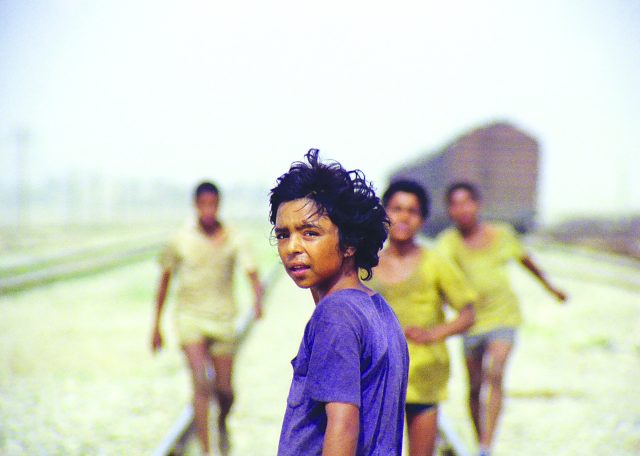
The child has no parents, no siblings, no relatives to speak of. He’s 11 years old, and what happened before the movie starts is of little concern. Ditto for what happens after the credits roll. If that makes The Runner sound like a movie existing in some amorphous space detached from reality, know this: Nothing could be further from the truth. This is one of the most authentic portraits you’re likely to encounter.
Filmed in Iran, directed by Amir Naderi and released in 1984, The Runner has been called one of the first masterpieces from post-revolutionary Iran. Now the film has been restored and re-subtitled and is currently making the art-house cinema rounds thanks to Rialto Pictures. And on Saturday, March 18, The Runner lands at CU Boulder’s International Film Series for a screening you don’t want to miss.
Set in the port city of Abadan and based on Naderi’s youth, The Runner is a movie in constant motion with a protagonist, Amiro (Madjid Niroumand), who thrives on movement. Amiro lives by himself, finds his own food, washes his own clothes and makes his own way. For money, he collects glass bottles littered in the surf and then sells them to a recycler. When an incident over who saw a bottle first turns into a skirmish, Amiro starts selling ice water out of a bucket on the street. Then he starts shining shoes at a military base café. It’s Amiro’s best job until a customer accuses him of stealing a lighter.
All the while, Amiro keeps running. From job to job, place to place, sometimes just for the sheer joy of it. He’s not the only kid roaming these streets — there are dozens of them in his immediate orbit. At one point, they play a game where they wait for a train to pass and then chase after it. The first one to touch the train wins. The prize: nothing. It’s just something to do, and a chance to measure themselves against each other. Amiro is one hell of a runner, but he doesn’t win. He does keep chasing the train even after the competition is over. When one of the kids asks why, Amiro says he wanted to see how far he could go.
The character of Amiro paired with Niroumand’s unguarded performance makes The Runner compelling, but it’s what director Naderi and cinematographer Firooz Malekzadeh accomplish with the visuals that make it magnificent. The film is rich with symbolism, but none of it feels forced or academic. Rare are movies this effortless. Take the shot of Amiro on his bicycle racing against a plane on the runway. You could read a lot into the image — and its placement in the narrative — or you could just absorb the beauty of the composition and the power of Niroumand’s performance.
The Runner is bursting with such moments. Even Amiro’s makeshift home, an empty room overlooking the sea, has a romantic quality. Drafty, yes, and probably not very comfortable at night, but look at the way the soft golden sunlight falls across the room, the glint of the blue sea through the doorways, the breeze blowing. It’s like a moment from a Hayao Miyazaki movie, sans the magical realism.
It’s worth wondering why Naderi chose to find such beauty in a story that could have wallowed in the gutter. Maybe he couldn’t help himself. Maybe this was his way of rescuing Amiro from the harshness of life. Or maybe this beauty is Amiro’s way of saving himself from the harshness surrounding him. Amiro is no delusional child. He knows what he’s up against. He knows the world is just waiting to cheat him out of everything he has. Yet, he smiles. Amiro is almost always seen with a smile. And when The Runner comes to its triumphant and ecstatic conclusion, Amiro’s smile is so big it practically has wings.
ON SCREEN: The Runner, 7:30 p.m. Sat., March 18, International Film Series, CU-Boulder, Muenzinger Auditorium, 1905 Colorado Ave.














